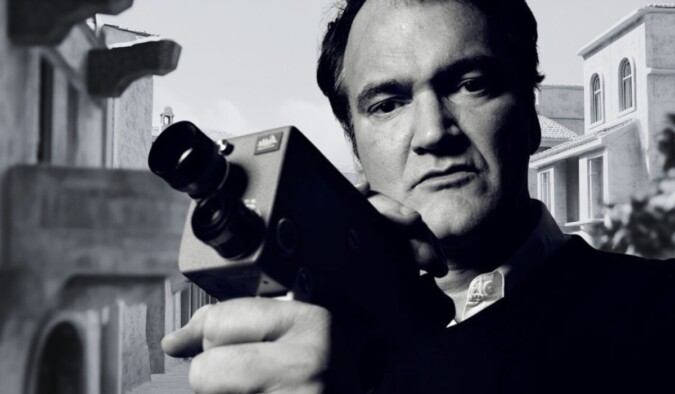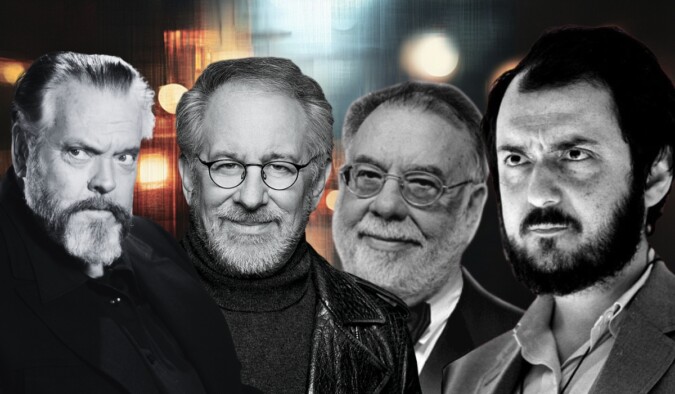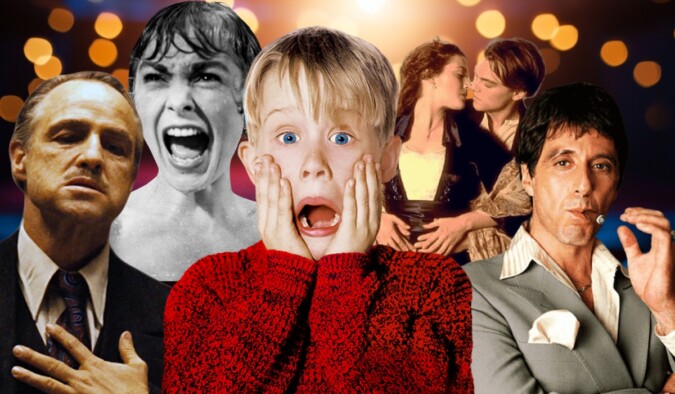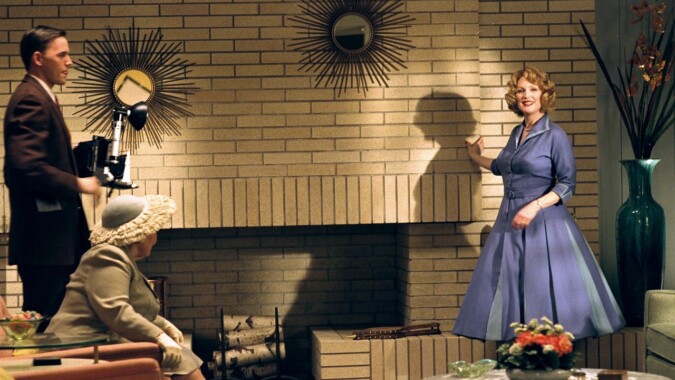Cinema lingers in memory not just through plots or effects, but through the emotions it evokes and the worlds it creates. Some films rise above trends, outlasting their release decades to become part of cultural consciousness.
Certain works aren’t simply watched—they’re quoted, referenced, felt. They live in conversation and influence. Examining what makes a film iconic means uncovering why a story or performance refuses to fade.
Here begins the look into what transforms a film into something that endures, reshapes, and never lets go.
Defining “Iconic” and “Timeless” in Cinema
Many films earn critical praise or dominate the box office, yet only a handful rise into the space where generations remember, rewatch, and reflect on them. Iconic cinema doesn’t rely on statistics—it leaves a lasting impression.
Popularity can flicker and fade. A technically flawless film might win awards and still fall into obscurity. Iconic status emerges when audiences carry a movie with them—when it becomes a shared reference point across time. Rewatching turns into ritual.
Quoting lines becomes second nature. People return not just for entertainment, but for comfort, identity, and meaning.
Some essential traits separate iconic films from everything else.
- The characters feel alive long after the credits roll. Viewers find themselves identifying with struggles, losses, or victories that reflect their own experiences.
- The film comments on or shapes society, influencing language, style, or thought. Its presence is felt in everyday conversation.
- Something about it becomes instantly recognizable—perhaps a line, a look, or even the mood it creates.
- New audiences continue to discover it. Parents introduce it to their children. Friends recommend it decades later.
Personal attachment elevates a film into something larger. People don’t just admire an iconic movie—they feel seen by it. A story might speak to someone going through heartbreak, isolation, or triumph. Even when shared with millions, that story still feels like it belongs to the individual viewer.
“Standing the test of time” means continuing to matter. A film that moves, challenges, or comforts across decades holds value no calendar can erase. Consider how Casablanca still evokes longing and heartbreak, or how The Godfather remains a cultural shorthand for power, loyalty, and family.
Wyświetl ten post na Instagramie
Audience affection matters more than critical consensus.
- Recommend the film repeatedly.
- Watch it during key life events or holidays.
- Find new meaning with each viewing.
- Defend it passionately in conversation.
Core Elements That Make a Movie Iconic
Not all great films achieve iconic status. Some entertain, win awards, or enjoy critical praise, yet they fade with time. Others carve a permanent place in public consciousness.
Iconic films share qualities that help them endure. They take risks, resonate emotionally, and influence culture.
Innovative Storytelling & Structure

New ways of telling stories often leave an indelible mark. Audiences remember when a film disrupts expectation.
Citizen Kane introduced a fragmented narrative and deep-focus cinematography, allowing simultaneous storytelling on multiple levels. It reshaped cinematic grammar.
Pulp Fiction took disjointed timelines and sharp dialogue to create something electric. Quentin Tarantino tossed out traditional structure and made a film that crackled with attitude and invention.
Innovation in structure isn’t about confusion—it’s about courage. Audiences respond to creators who don’t play safe. Movies that rewrite how stories can unfold often become reference points for what cinema can achieve.
- Nonlinear narratives
- Multiple points of view
- Unconventional plot structures
- Storytelling that rewires audience expectations
Emotional Resonance & Universal Themes
Emotional truth outlasts spectacle. Stories anchored in raw human experience echo far longer than explosions or plot twists.
The Shawshank Redemption continues to inspire with its depiction of hope in the face of despair. Casablanca blends romance and sacrifice into something haunting. Schindler’s List devastates with quiet moments of mercy in an unforgiving context.
Certain themes are forever relevant. Viewers relate across time, language, and background when a film touches on something real. No subtitles are needed when pain, joy, or fear is conveyed with honesty.
Steven Spielberg once said audiences remember how a film makes them feel—not what it looks like. Emotion is what pulls people back for repeat viewings.
- Love and sacrifice
- Redemption and forgiveness
- Justice and injustice
- Survival and perseverance
- Grief, loss, and healing
Strong Direction & Vision

Directors with a clear, confident voice often deliver the most lasting work. Vision is evident when every shot, sound cue, and cut feels purposeful.
Orson Welles. Francis Ford Coppola. Stanley Kubrick. Steven Spielberg. These aren’t just directors—they’re architects of cinematic worlds. Their work feels deliberate in tone, pacing, casting, and framing.
Audiences may not know what made a film work, but they feel it. When a movie feels cohesive, when the tone is consistent and the style unmistakable, that’s direction doing its job.
- Consistent tone and atmosphere
- Visual storytelling that matches narrative emotion
- Effective use of sound and silence
- Strong performances shaped through directorial guidance
Cultural & Historical Impact
Some films reshape public discourse or become cultural touchstones. They don’t just mirror their era—they influence it.
Star Wars became modern mythology, spawning generations of fans and a new standard for science fiction. The Matrix challenged ideas of identity and control, leaving fingerprints on tech culture and fashion. 12 Years a Slave forced a national reckoning with historical injustice.
Legacy in cinema often arrives through cultural echoes. When a film is quoted, studied, or mimicked years later, it has surpassed entertainment—it has altered the conversation.
- Inspiring future filmmakers
- Changing genre conventions
- Influencing language, fashion, and technology
- Opening or reframing social and political debates
Unforgettable Characters and Performances
Characters become permanent residents in memory. Dialogue might fade, but expressions, mannerisms, and voices stay with audiences.
Vito Corleone’s hushed menace. Rick and Ilsa’s aching farewell. The Joker’s chaotic conviction. Performances like these burn themselves into the minds of viewers not just for talent, but for truth.
A character becomes iconic when it feels real. Not just acted, but lived. People don’t just quote the lines—they imitate, admire, or fear the figure behind them.
- Complexity and contradiction
- Distinct physical or vocal presence
- Strong emotional arc or transformation
- Connection to broader cultural themes
Visual and Technical Brilliance
Some films remain relevant because they look and feel ahead of their time. Visually striking work has a staying power all its own.
Lawrence of Arabia used scale to evoke awe. 2001: A Space Odyssey reimagined the cosmos through sound and silence. Inception bent architecture and gravity to serve psychological tension.
Spectacle without purpose fades. But when technique aligns with theme, it enhances storytelling. Film becomes something more than moving pictures—it becomes a form of thought.
- Innovative cinematography (e.g., deep focus, long takes)
- Groundbreaking visual effects
- Imaginative sound design
- Seamless integration of practical and digital tools
Timelessness through Genre Innovation

Genres help audiences know what to expect—but it’s often the films that refuse to follow the rules that endure longest.
The Godfather turned crime drama into Shakespearean tragedy. Parasite blurred the lines between satire, thriller, and horror. These films don’t just work within a genre—they transform it.
Movies that disrupt expectations stay fresh because no one else can replicate what they do. Genre innovation creates something that lives outside trend cycles.
- Unexpected tonal shifts that work
- Fresh takes on familiar tropes
- Layering multiple genres in a coherent story
- Challenging audience assumptions
Factors That Can Date a Movie
Time doesn’t spare even the most beloved films. A story might once have captivated an audience but now feels awkward, outdated, or even cringe-worthy under modern scrutiny.
What causes a once-revered piece of cinema to lose its edge? Several factors contribute to this shift, ranging from visual aesthetics to shifting societal norms.
Common reasons films feel dated:
| Factor | Summary | Decade Most Common | Effect on Viewer | Examples |
|---|---|---|---|---|
| Outdated Technology | Obsolete tech locks a film in its era | 80s–90s | Feels unintentionally comedic or dated | Pagers in You’ve Got Mail |
| Trendy Soundtracks/Effects | Synth music or poor CGI age visuals/audio | 80s–early 2000s | Distracts or feels cheap | Ladyhawke, early CGI films |
| Slang & Cultural References | Era-specific lingo loses meaning over time | 90s–2000s | Confuses or annoys modern viewers | Teen films like Clueless |
| Fashion and Styling | Flashy trends turn serious scenes into parody | 70s–90s | Breaks immersion | Neon outfits, mullets |
| Social/Cultural Blind Spots | Stereotypes or outdated values feel off now | Varies | Feels uncomfortable or offensive | Early rom-coms, war films |
| Comedy via Stereotypes | Humor based on caricatures ages poorly | 60s–2000s | Comes off lazy, cringe, or offensive | The Love Guru, Soul Man |
Why Some Films Gain Timelessness with Time
While some movies lose their luster, others gain strength long after release. Reception at the time of debut isn’t always an indicator of lasting value. History offers many examples of films that arrived quietly and later became revered as masterpieces. What gets overlooked in one decade may become essential in another.
Shifting perspectives, technological rediscovery, and modern conversations often bring older films back into the spotlight. Below are reasons why certain titles become more respected or loved over time.
Factors contributing to delayed recognition:
| Factor | Summary | Example |
|---|---|---|
| Cultural Maturity | Some films are ahead of their time and gain value as audiences evolve. | Citizen Kane grew in respect over decades. |
| Emotional Themes | Emotional depth may connect better with future audiences. | It’s a Wonderful Life found love years later. |
| Tech Access & Rediscovery | Streaming gives old or obscure films a second life. | Algorithms introduce hidden gems to new viewers. |
| Critical Reappraisal | Critics may later praise what was once overlooked. | Social context can change a film’s reception. |
| Fan Communities | Online buzz can revive interest and build cult status. | Forums and social media keep older films alive. |
An immediate reception doesn’t write the final word on a film’s worth. Many stories take their time reaching the right audience. Delayed impact can be just as powerful—sometimes more so—because it grows organically. A movie that felt small at first can become larger than life with distance, context, and affection.
The Bottom Line
Iconic films don’t survive on hype alone. Craft, emotion, direction, and cultural impact create lasting value. A classic captures not just a moment, but a feeling that remains relevant over decades.
Cinema reflects and shapes thought. It offers mirrors, windows, and sometimes escape. The ones that last don’t just entertain—they challenge, comfort, or inspire.
Legacy isn’t awarded. It’s earned, lived, and remembered—long after credits roll.





